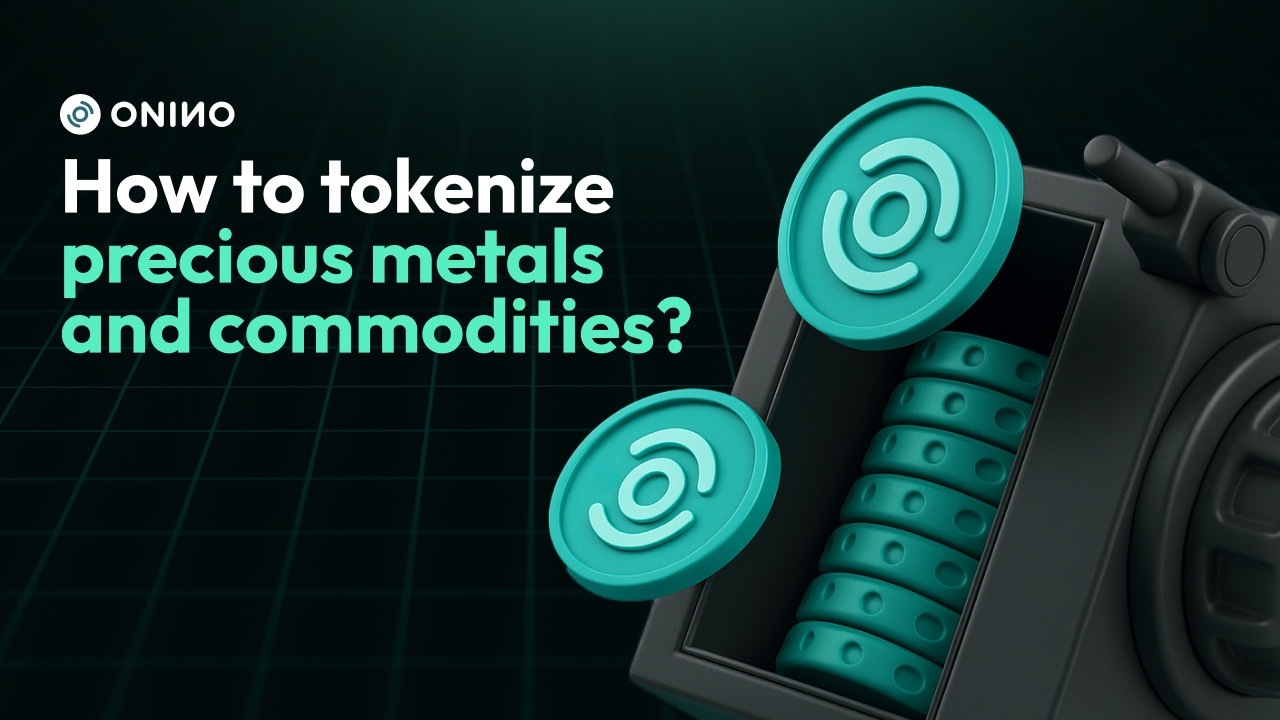Tokenizing precious metals like gold and silver, as well as commodities such as agricultural assets, is transforming how these real-world assets are traded, stored, and owned. Using a tokenization platform, asset owners can digitize physical commodities into blockchain-based tokens, creating fractional, tradable, and programmable forms of ownership.
In this guide, we explain how to tokenize precious metals and commodities, explore the benefits of using a blockchain tokenization platform, and outline a compliant path to launch and manage these assets on-chain.
What Is Commodity Tokenization?
Commodity tokenization is the process of issuing digital securities that represent ownership of real-world assets such as gold, silver, or grain. These tokens:
- Are backed 1:1 by the physical asset or by a contract linked to it.
- Can be traded on a tokenized investment platform.
- Are programmable for compliance, custody, and settlement automation.
This model is increasingly used by companies looking to digitize gold reserves, agricultural inventories, or physical commodities through a regulated security token platform.
Why Tokenize Real-World Assets Like Gold and Grain?
Tokenizing real-world assets such as metals and agricultural products brings multiple benefits:
For Investors
- Fractional ownership: Access to gold or wheat in small denominations.
- Liquidity: Trade tokenized assets 24/7 across marketplaces.
- Transparency: Blockchain records guarantee proof-of-reserve.
- Accessibility: Global participation without relying on legacy intermediaries.
For Issuers
- Lower distribution costs via digital onboarding.
- Programmable compliance using smart contracts.
- Global reach via an asset tokenization platform.
- Reduced counterparty risk with automated clearing.
Use Cases: Gold, Silver, and Agricultural Tokens
Tokenizing Gold and Silver
Precious metals are ideal for tokenization because they are:
- Standardized: Easy to price and divide.
- Stored in vaults: Enabling custody-backed digital tokens.
- Globally valued: Offering investor familiarity.
Use Case Example:
- A gold refinery issues tokens representing 1 gram of gold each.
- Tokens are redeemable against physical gold stored in a Swiss vault.
- Smart contracts on an EVM compatible blockchain ensure fractional ownership and controlled distribution.
Tokenizing Agricultural Commodities
Agricultural commodities like wheat, corn, or coffee can be tokenized to represent:
- Harvest futures.
- Inventory in a warehouse.
- Contracts with producers.
Use Case Example:
- A co-op tokenizes grain inventories.
- Buyers receive digital tokens representing claimable stock.
- Smart contracts manage delivery and pricing rules.
This opens new avenues for tokenized fundraising in the agri-supply chain.
How to Tokenize Precious Metals and Commodities
Step 1: Legal & Regulatory Structuring
- Determine asset class (e.g., security, e-money, utility).
- Select legal jurisdiction for regulated tokenized assets.
- Structure offering via a tokenized SPV or asset-linked contract.
- Ensure MiFID II tokenization or local regulatory compliance.
Use a security token platform that provides legal templates and compliance tooling.
Step 2: Select a Tokenization Platform
Choose a licensed asset tokenization platform or whitelabel tokenization solution to:
- Deploy smart contracts securely.
- Manage KYC/AML and investor onboarding.
- Interface with physical custody providers.
ONINO, for example, offers an EVM compatible blockchain and integrated tokenized asset APIs to connect off-chain inventories with on-chain records.
Step 3: Link the Physical Asset
- Use custody vaults for gold/silver with audit trails.
- Use warehouse receipts or digital twin models for agricultural goods.
- Establish 1:1 backing, redemption logic, or delivery guarantees.
Ensure that metadata in tokens clearly describes asset linkage and legal rights.
Step 4: Token Issuance & Distribution
- Mint tokens representing fractional units of the commodity.
- Offer via a primary token offering platform to investors.
- Accept crypto and fiat for payment.
- Ensure compliant crypto investing using whitelisting and regional restrictions.
Step 5: Enable Secondary Trading
- List on licensed exchanges or enable peer-to-peer transfers.
- Maintain transfer restrictions in smart contracts.
- Track beneficial owners in accordance with security tokens EU or tokenized securities Germany requirements.
Real-World Examples
- Tether Gold (XAUT): Each token backed by 1 troy ounce of gold in a Swiss vault.
- Agrotoken (Argentina): Soy, corn, and wheat tokenization with redemption via grain delivery.
- Kinesis: Gold and silver tokenized on their own blockchain with spendable debit cards.
These projects demonstrate the viability of tokenizing real-world assets at scale.
Challenges and Considerations
- Custody Risk: Physical gold must be audited and insured.
- Redemption Clarity: Tokens must clearly define delivery or settlement.
- Price Feeds: Ensure integration with oracles for real-time pricing.
- Jurisdictional Limits: Not all regulators accept commodity tokens as securities.
Platforms like ONINO provide a compliant path using EU tokenization infrastructure.
Conclusion
Tokenizing precious metals and commodities unlocks new liquidity and global access for traditionally illiquid markets. Using a robust tokenization platform, issuers can create trusted, tradable digital assets backed by gold, silver, or agricultural goods.
Whether you’re a metal refiner, grain producer, or digital exchange, a modern blockchain tokenization approach allows you to:
- Lower issuance and custody costs.
- Offer fractional access to hard assets.
- Ensure full compliance with securities laws.
ONINO's tokenized investment platform provides all the tools to issue, manage, and scale tokenized commodities globally, with integrated custody, smart contract tokenization, and regulatory support.
Ready to tokenize your gold, silver, or agricultural assets? Book a demo with ONINO and get started.


